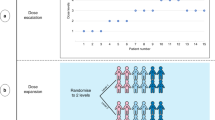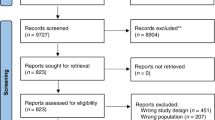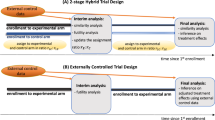Abstract
The main objective of phase II clinical trials is to estimate treatment efficacy on a relatively small number of patients in order to decide whether the treatment ought to be studied in large-scale comparative trials. They play a key role in the drug development process, since the results determine whether or not to proceed to phase III trials. Multistage designs for phase II clinical trials proposed by Gehan, Fleming, Simon and Ensign are described and compared. Gehan's and Simon's designs have two stages, Fleming's designs can have two or more stages, and Ensign's three-stage design combines the first stage of Gehan with the two stages of Simon. Phase II clinical trial protocols and reports should include a description of the design selected with a justification for the particular choice. The present practice is very far from this ideal.
This is a preview of subscription content, access via your institution
Access options
Subscribe to this journal
Receive 24 print issues and online access
$259.00 per year
only $10.79 per issue
Buy this article
- Purchase on Springer Link
- Instant access to full article PDF
Prices may be subject to local taxes which are calculated during checkout
Similar content being viewed by others
Author information
Authors and Affiliations
Rights and permissions
About this article
Cite this article
Kramar, A., Potvin, D. & Hill, C. Multistage designs for phase II clinical trials: statistical issues in cancer research. Br J Cancer 74, 1317–1320 (1996). https://doi.org/10.1038/bjc.1996.537
Issue Date:
DOI: https://doi.org/10.1038/bjc.1996.537
This article is cited by
-
Re-formulating Gehan’s design as a flexible two-stage single-arm trial
BMC Medical Research Methodology (2019)
-
Challenges in Combinational Oncology Studies
Pharmaceutical Medicine (2008)



